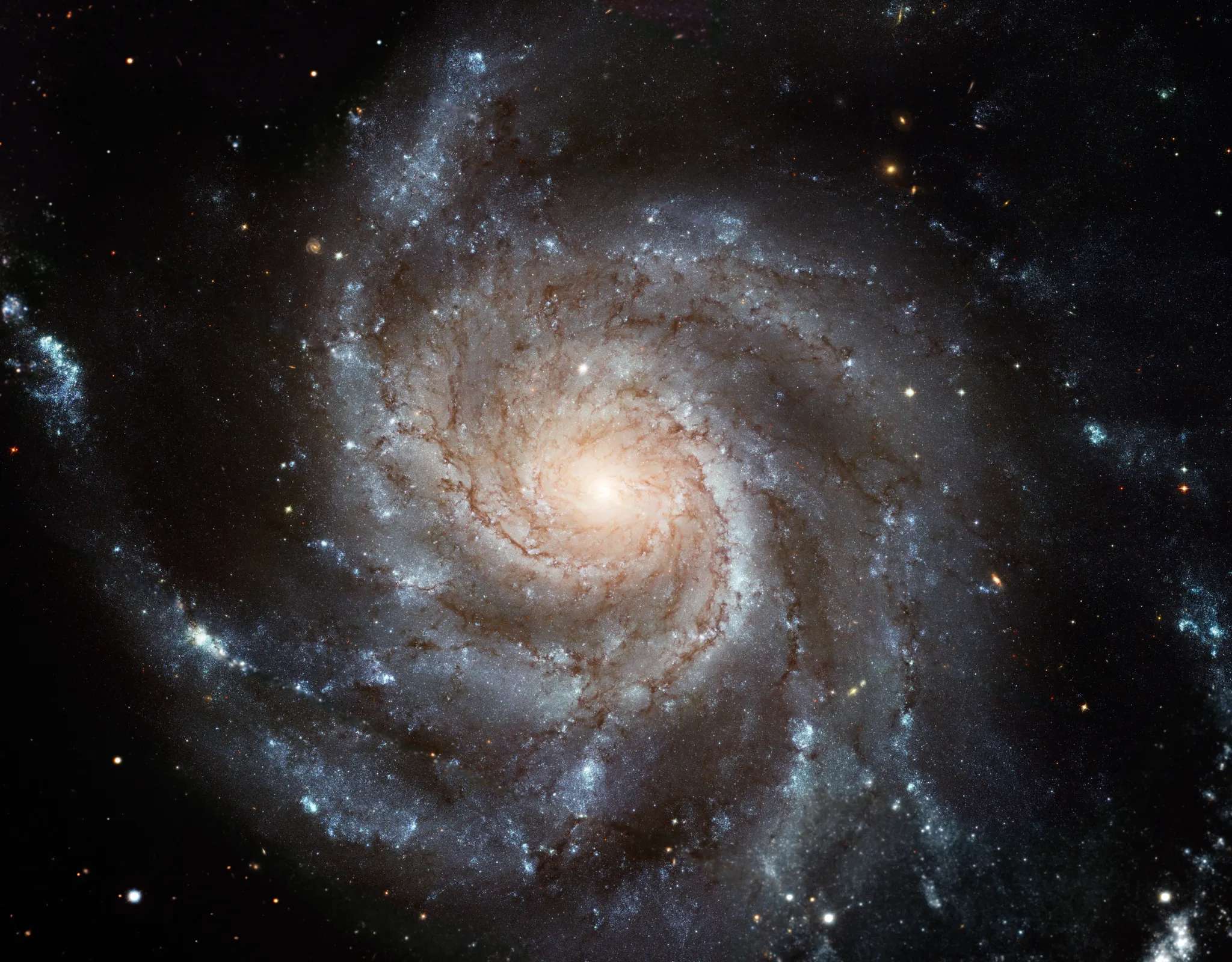M101 | NGC 5457 | Pinwheel Galaxy | Ursa Major | 200,000 Light Years Away
Messier 101, also known as the Pinwheel Galaxy, is a majestic spiral galaxy located in the constellation Ursa Major. Discovered by Pierre Méchain in 1781 and later included in Charles Messier’s catalog, it is situated approximately 21 million light-years away from Earth. Known for its grand design spiral structure, Messier 101 spans about 170,000 light-years in diameter, making it one of the largest spiral galaxies in our cosmic neighborhood.
One of the distinguishing features of Messier 101 is its prominent spiral arms, adorned with vast regions of star formation, glowing nebulae, and numerous young, bright stars. The galaxy’s intricate structure and face-on orientation provide astronomers with an exceptional opportunity to study the details of its spiral arms and the processes driving star formation. Observations of Messier 101 contribute significantly to our understanding of the dynamics, stellar populations, and environmental influences that shape the evolution of large spiral galaxies.
Messier 101 has been extensively studied across various wavelengths, from visible light to radio waves and infrared radiation. These multi-wavelength observations allow astronomers to probe different aspects of the galaxy’s properties, such as the distribution of gas and dust, the presence of stellar clusters, and the overall structure of its spiral arms. The study of Messier 101 continues to yield valuable insights into the complex interplay of cosmic forces that govern the formation and evolution of grand design spiral galaxies in the vast cosmic tapestry.

